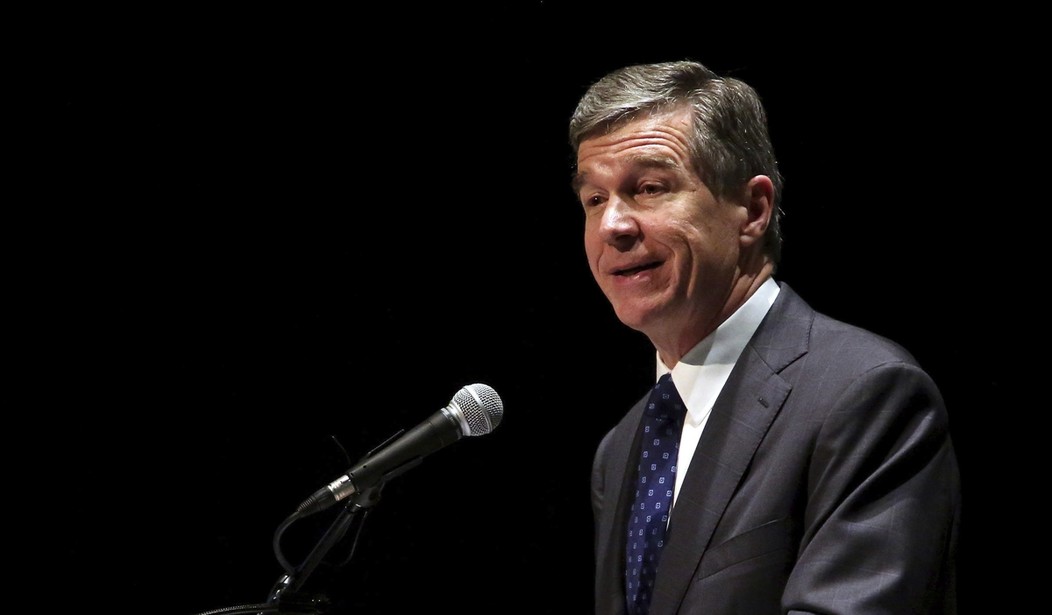
As I wrote last week, North Carolina state Democratic leaders including health officials and Gov. Roy Cooper himself have been strangely vague on the details regarding the data that has been used to make decisions related to keeping North Carolina’s March 30th stay at home order in place.
But on Thursday, the governor and his Wuhan coronavirus task force changed course with more detailed statistics as they sought to justify an extension of the statewide stay at home order until at least May 8th:
“After a thorough analysis, it’s clear that we’re flattening the curve, but our state is not ready to lift our restrictions yet,” Cooper said. “We need time to slow the spread of the virus before we can start easing those restrictions.”
He said the extension includes continued closure of dine-in restaurants, bars and close-contact businesses like hair and nail salons, movie theaters and others mentioned in his executive order.
Cooper said his plans to reopen the state will echo the White House’s recommendations with a three-phase process. During each phase, officials will be monitoring the number of positive cases and any noticeable spike in cases, the percentage of positive tests and the number of overall hospitalizations due to COVID-19.
State health director Dr. Mandy Cohen flat out stated during the briefing yesterday that “North Carolina is in a very good place. We have flattened the curve” – but she also suggested that more needed to be done.
That “more”, she noted, was to see a consistency in terms of a decline in or a “sustained leveling” of cases over a period of two weeks along with a decrease or “sustained leveling” of hospitalizations:
Trends show NC has only hit 1 benchmark: A ⬇ trend in COVID-19 cases discovered through its surveillance.
No declines in lab-confirmed cases, hospitalizations or the percentage of tests coming up positive over the last 14 dayshttps://t.co/tANrbqKfeo pic.twitter.com/xlLxXzredQ
— The News & Observer (@newsobserver) April 23, 2020
During the press briefing, Gov. Cooper announced the three phase plan the state had come up with to reopen the state assuming North Carolina keeps the curve flat:
So IF we started easing on May 8, phase two could be May 22 or 29 and then phase three could kick in sometime between June 19-July 10. Right? pic.twitter.com/Ax2DkEOXq8
— Tim Boyum (@TimBoyumTV) April 23, 2020
The timeline, as you’ll note, basically puts restaurants, bars, and other small businesses in very tough positions at least through the beginning of June, even if the stay at home order is eased after May 8th. In fact, it almost doesn’t even look like a real reopen plan at all:
So the @RoyCooperNC “plan to reopen NC” was actually a plan to keep almost all businesses impacted by his stay at home order closed through May. 🤷♂️ 🤦♂️ 🚫💇♂️ 🚫🍽#NCPOL https://t.co/DjbEanArBD
— Brent Woodcox (@BrentWoodcox) April 23, 2020
Though it was encouraging to see more statewide data from these officials, the problem is that they aren’t taking a county by county approach to their plan. For example, there are some counties in North Carolina that have no diagnosed cases of the virus at all. Why can’t their approach to reopening be different than the state’s?
Lt. Gov. Dan Forest (R), Cooper’s opponent in the fall election, made similar points after Cooper’s plan was announced:
Gov. Cooper's one-size-fits-all approach for reopening is not necessary for a state as large as North Carolina. This decision will needlessly crush businesses and destroy livelihoods in places that don’t even have a single case of coronavirus.#ncpol #ncga #covid19 #releasethedata
— Lt. Gov. Dan Forest (@LtGovDanForest) April 23, 2020
We shouldn't be holding back counties that are ready to safely reopen. The governor should re-release the data he presented today at the county level so we can see which areas are ready to reopen without delay. #ncpol #ncga #covid19 #releasethedata
— Lt. Gov. Dan Forest (@LtGovDanForest) April 23, 2020
Forest is right. Consider this: Because every state’s situation is different, their plans are going to be different. New York’s plan, for example, would not be the same as Montana’s. Similarly, not every county’s situation is the same, either, and they should be given the okay to take different approaches than the statewide approach if the local approach is a better fit for their county.
The Governor’s executive order that put the stay at home rules in place stated that if a county’s order was stricter than the state’s, then the county’s order would be the one in effect. Why can’t a similar approach be allowed for the counties in terms of loosening the restrictions, too?














Join the conversation as a VIP Member